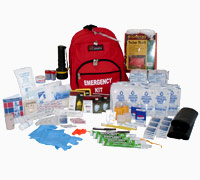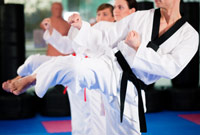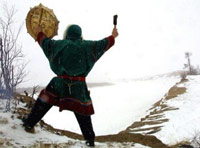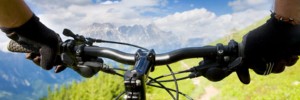Can You Be More Fluid & Dynamic?
Our world is always throwing challenges of all types and sizes at us. How we respond depends on who we are and the environment we have grown up in. Some meet danger without fear and a calm mind; others avoid it like a plague, feeling crippled in the process.
 How can we be more fearless and confident when it comes to our personal safety and security? If these things aren’t automatic then they must be learned. Be warned that learning them comes with great responsibility. This power is for your safety and safety of your dear ones, but you must use it only as a last resort.
How can we be more fearless and confident when it comes to our personal safety and security? If these things aren’t automatic then they must be learned. Be warned that learning them comes with great responsibility. This power is for your safety and safety of your dear ones, but you must use it only as a last resort.
Good news is that just knowing those skills will show in your image, they way you move and interact with the world. This is often enough to keep various physical trouble out of your life.
Also knowing what resources to access in emergencies, how to assess and confront danger physically and mentally are all skills. If these are skills then there is nothing holding us back from learning them.
Following the information in this article will have you become more in tune with your body and mind, allowing you to know and test your limits. It will put you on the path to becoming more fluid and dynamic.
Emergency Preparation Kit and Resources
 The Government of Canada launched a 72hrs Emergency website www.getprepared.gc.ca, on which they advise a purchase of a emergency preparation kit. The site contains many useful ideas on preparing for emergency. You can watch the videos on the site, they’re short and to the point.
The Government of Canada launched a 72hrs Emergency website www.getprepared.gc.ca, on which they advise a purchase of a emergency preparation kit. The site contains many useful ideas on preparing for emergency. You can watch the videos on the site, they’re short and to the point.
Some of the key points include making copies of important documents like passports, birth certificates, wills and storing them away in a fireproof/waterproof safe. A small safe costs as low as $30 at Staples Business Depot.
In addition to that, you can scan the documents and store the encrypted files on a server somewhere else, for example, your website host (in the “private” folder). One more option is to copy them to a CD/DVD/USB/HDD and keep them in a safe place like a security box at your bank.
Make photocopies of everything in your wallet, include an emergency contact and “if found” notes on everything that you carry around (keys, cell, notebook, helmets, wallet, etc.). See the Cleaning the Clutter article for more info.
Color Codes for Combat Readiness in Your Everyday Life
Experts in defensive tactics use color codes to describe levels of combat readiness to ensure personal security. These levels represent how aware you are of threats around you and your resulting ability to deal with those threats (by Col. Jeff Cooper).
Condition White: You are unaware of what’s going on around you. Perhaps you’re tired, or worried about work or school. Maybe your senses are impaired by alcohol or drugs. Either way, you are not ready for anything.
Condition Yellow: You are alert but calm and relaxed, scanning your surroundings for threats. You know who’s in front of you, to your sides, and behind you. You don’t think anyone will attack, but you are mentally ready in case something happens.
Condition Orange: In Orange, you sense that something is not right and you might get attacked. You are aware of the positions of all potentially hostile people around you, as well as any weapons they may be able to use, such as in their hands or within reach.
You are developing a plan for dealing with the potential hostiles: “…first I take out the guy with the bat, then the big guy near the truck…” You have also identified multiple escape routes, depending on what response you will use. In addition to being mentally ready, you are physically ready as well.
Condition Red: The fight is on. Someone is assaulting you and you are reacting to the attack and defending yourself. You are taking immediate and decisive action to stop your opponent, flee, or get help.
Know Your Strength and Apply only What’s Needed
A few notes straight out of my Journal:
En route home I saw some aggressive drunk male bothering people at a bus stop. One man talked nicely to him saying “friend, come with me, tell me what’s wrong, we don’t want to bother these nice people here.” He put his arm gently around the drunk man’s back and escorted him out of the bus shelter.
I don’t know who he was or what was his self-defense skill level, but just my thought that confidently knowing (but not actually using) martial arts techniques such as arm twisting would be helpful in situations like this.
During my Martial Arts training class I partnered with a large man, because my friend didn’t make it in. Overall my technique was a bit rusty, but pretty good for the first time after coming back after few years.
Though the man’s technique and strength was better, I had much more endurance and speed due to consistent cardio and core training. I didn’t gasp for air once, whereas he needed a breather now and then.
So at home I watched some Human Weapon episodes on YouTube, which definitively reminded me of some useful techniques. Also watched the Marine Corps Human Weapon and it really “installed” a Drill Sergeant in me to push myself during the workouts.
My power, endurance, speed, and accuracy restored to top-notch fast. I need to work on my technique a bit more. I destroyed the guy despite going rather easy; those 70lbs dumbbell chest presses with [my Personal Trainer] are working magic. Flexibility is good too, but I should resume Hatha Yoga on regular basis.
The form and techniques are highly technical and do not require high intensity. They require a lot of time and patience to become automatic (muscle memory and habit). Increase speed over time and then when you go all out, you don’t risk losing good form and effectiveness of the hits.
Again, remember that the goal is not to destroy but to train. Practice FLUIDITY and DYNAMISM!
Walking Away vs. Teaching a Lesson
A few notes straight out of my Journal:
One night I saw two young men yell at a shorter male. The short male was calmly speaking back and had a facial expression/body language of “you’ve taken on the wrong guy!” The two aggressors just stood there yelling, but not doing anything physical. Eventually they left. This is a great example of ignoring or walking away vs. teaching a lesson.
It helps to have some Martial Arts training and gym time so that the impression is believable through the physical presence. It’s a great first line of defense for personal safety before it needs to get physical. That or walking away when possible. Protecting your ego is not worth getting injured, even if you know your stuff. There is nothing to prove, except that you have a self-confidence complex.
In the situation where you have to fight, let the opponents know your eagerness. Strike the one that you cannot see first. If the opponent force gets too overwhelming, you lose. Don’t let your ego get to you, walk away if possible.
The best advice: The sparrow doesn’t land where the lion roams.
A few notes straight out of my Journal (from long time ago):
While sitting in my car and chatting with a friend, some man in front of me was parking his car and slightly hit me. In response, I gave him rude remarks about learning to park.
The situation evened out later that day when I was driving home (around 10pm).
I was making a right turn and stole the right of way from a pedestrian (while he was still far enough on the sidewalk). I signed “I’m sorry” with my hand, which he possibly didn’t see. When I was almost done with the turn he hit the back of the car.
I stopped the car and got out, caught up to him, and asked why he hit my car despite my showing him the sorry sign. He was calm and said that I almost ran him over (which was an exaggeration). I knew I technically was at fault (pedestrians always have right of way) and I wasn’t really angry anyway, but I was kinda hyper.
He took in a deep breath and then seeing that I had no intent to attack, he just turned and walked away as the better and bigger man. I yelled a couple more things in his direction, but then decided to come back to my car.
A few lessons here:
- It’s good to breathe/puff up and show readiness to defend/attack. However, this quick act exposes a weakness by not looking always ready (the man wasn’t prepared for confrontation after initiating one – at 10pm on an empty street).
- Walking away (the man) was good after puffing up and testing the individual (me), but he shouldn’t have turned his back on me – that was technically a risky thing to do for his personal safety.
- I was lucky in the two cases that the two men weren’t volatile, the universe went easy on me this time, as the only consequence (of the 2nd one) is feeling uneasy in my heart which is a common theme when I have a lesson to learn.
- Bottom line, I must keep calm and be even more careful not to do to others what I don’t like to be done to me (to the best of my abilities).
 As I become more well rounded, I must remain humble and gentle unless needed otherwise. Basically, not to be a snob or provoke fights, and don’t react impulsively to others’ heated reactions.
As I become more well rounded, I must remain humble and gentle unless needed otherwise. Basically, not to be a snob or provoke fights, and don’t react impulsively to others’ heated reactions.
I must remember to walk away, forget it, and be the better man. Whether on the street, in the clubs, wherever. Just walk away. I have nothing to prove to anybody. My intention in both situations described earlier was to teach them a lesson: “scare them a bit so they don’t provoke fights in the future”, but is it really my job? Maybe I did all this to teach this big lesson to myself.
This experience shed a light on how some people feel when they just look for trouble on purpose. It doesn’t have to be a valid or good reason, they just feel the rush from yelling at somebody and creating fear in them.
It’s interesting to notice that the man did NOT defuse the situation by walking away. I didn’t feel “satisfied.” I think a better solution in this situation would be to actually say: “that was my mistake, I’m sorry” – that would work much better on me – basically make my ego happy and suppress the heat. Thus, ditto note to self.
Calming down the situation and walking away works on 99% of aggressors, especially if it SOUNDS genuine. But keep in mind one very important thing: never turn your back on the aggressor when walking away. You can’t completely trust them to behave.
Will, Worth, Integrity Ego, Hidden Wants and Needs vs. Actual Communication, and other Related Thoughts
We regain our will when we act and use it towards our integrity, feelings of harmony, and self-worth. For example, use a strong but soft resonant voice, and win-win i-language such as: “I feel uneasy about this. Let’s work together and try to resolve this.”
 During my self-growth I have experienced that it is important to work together with the ego. Feed it positive knowledge, images, phrases, affirmations, beliefs, and ideas. It is always helpful to acknowledge successes or learn if something can be done better next time.
During my self-growth I have experienced that it is important to work together with the ego. Feed it positive knowledge, images, phrases, affirmations, beliefs, and ideas. It is always helpful to acknowledge successes or learn if something can be done better next time.
Do not give yourself goals that are too hard, learn to take baby steps. When negative self-talk happens change it right away to something positive. Do not validate other people’s negativity around you. Reassure yourself that you are doing fine and looking great:
“I am successful! I am likable and I invite others to experience this in me!”
In your prayers, personal image, and communication present a consistent message about what you want using your words, voice, eye contact, body language, and actions.
Learn to accept gifts from others or Universe. Ask for what you want and act like you are able to handle it and are worthy to receive it. No one will pass the ball if your arms aren’t open!
To get and accept what I want, I:
- Directly ask for what I want
- Mention that it’s important/matters to me
- Connect with my heart and feelings
- Show myself as worthy, big, and grateful
- Make it easy for others to give me things
- Accept gifts with warmth and thankfulness
- Do not say “You shouldn’t have,” instead say “Thank You”
When asking for things or favours, believe in yourself and do not put yourself down. Let your request be coherent, positive, and easily accepted by others.
When asking a store clerk for a better price, ask warmly and without an emotional agenda. Maintain a comfortable stance like it’s a reasonable thing to do. Often sales people feel good about granting the request because an honest and playful request is a contrast to regularly heard demands.
To get what you want, your requests and actions must come from yourself, your heart, and your feelings. Let the world know you as you are, not as you think you should be. But improvement is always good.
Martial Arts Training and Different Fighting Styles
The above advice can work well by itself, however, not all of us can fake it till we make it. Therefore, some of you may require the necessary skills in order to be completely confident in your personal security. Martial Arts provide this opportunity.
 Martial arts are divided into many categories or a number of axes: Chinese vs. Japanese vs. Korean, Asian vs. European vs. American, striking vs. grappling, hard vs. soft, internal vs. external, and more.
Martial arts are divided into many categories or a number of axes: Chinese vs. Japanese vs. Korean, Asian vs. European vs. American, striking vs. grappling, hard vs. soft, internal vs. external, and more.
You can often train in a traditional style while also training in boxing/kickboxing to develop a better ring fighting style if you wish. But the old saying goes that if you chase two rabbits for lunch, you will go hungry…
Karate practitioners used to toughen their knuckles by striking a makiwara, or striking post until heavy calluses formed on their hands. Tae Kwon Do stylists pride themselves on breaking boards, tiles, and bricks with forceful kicks. Muay Thai fighters often lack feeling in their shins, the result of using their lower legs as clubs against their opponents.
External martial artists use force against force, for example, performing a block by tensing the muscle at the point of impact to absorb the shock and transfer damage to the opponent. This is in contrast to a Kung Fu open-hand parry, which follows the line of an incoming punch, catches up in speed, speeding up the attacking fist, except in a direction away from the Kung Fu stylist. This is done with relaxed and loose muscles, ie. not tense.
Internal martial arts focus on the martial artist’s internal attributes, such as focus, timing, awareness, and precision of technique. Aikido, with its emphasis on blending with the attacker’s movement and guiding him or her into the technique, is a classic example of an internal martial art.
The following table describes some attributes of both categories:
| Internal | External |
|---|---|
| Blending with an attack | Stopping an attack |
| Yielding | Struggling |
| Power comes from within | Power comes from outside |
| Relaxed | Tense |
| Fluid | Defined |
| Slow forms | Fast kata |
| Finesse | Power |
| Indirect | Direct |
| Circular | Linear |
| Accepting what is | Fighting against it |
| Acknowledging the limitations of the self | Denying any vulnerabilities |
| Winning without fighting is best | Destroying your opponent |
| Eg. Kung Fu (China), Aikido, Tai Chi | Eg. Karate, Muay Thai, Tae Kwon Do |
No discussion of internal martial arts is complete without the notion of Chi. The pinnacle of internal martial arts is the cultivation of Chi, the mystical “Force” that powers all things in the universe.
Although the discussion of Chi (or Ki, or Qi) takes an entire article, let it suffice to say that this mystical energy is the focus and center of many martial arts. As the foundation for many martial arts styles and practices of medicine, its perceived effects are profound.
List of various Martial Arts styles and their primary focus:
Striking/Standup: Boxing, Karate, Krav Maga, Kung Fu, Tae Kwon Do, Kickboxing
Grappling/Ground: Brazilian Jiu Jitsu, Russian Sambo, Shootfighting, Wrestling
Throwing/Takedown: Aikido, Judo, Hapkido, Shuai Jiao
Weapons: Kali, Iado, Kendo
Low-impact: Tai Chi, Ba Gua, Chi Gong based styles
Defense: American Kenpo Karate, Hapkido, Aikido, Brazilian Jiu-Jitsu, Ninjutsu, Muay Thai
The people who master these arts have mastery of TECHNIQUE. They are not necessarily bigger or stronger, they simply know how to use their bodies for maximum efficiency. They are not clunky and uncoordinated, they are FLUID and DYNAMIC!
Weight or size does not determine who wins or loses a fight. When you train hard and use the principles outlined above, you can and will prevail. Use your head; don’t let your opponent use his or her strengths against you. Fight your own fight.
Karate
I will describe one form of martial arts just to give you an idea of what one can expect.
The basic goal of Karate is self-defense. It teaches practitioners to block the strikes of opponents and then disable them quickly with pinpoint strikes. When take-downs are employed within the art, these tend to be used to set up finishing strikes.
 Goju-ryu (a sub-type) Karate is generally a stand up style, characterized by both hard (closed fist) and soft (open hand or circular) techniques. Many Goju-ryu practitioners feel as if they are martial arts technicians, in that they utilize angles to deflect strikes rather than trying to meet strength with strength.
Goju-ryu (a sub-type) Karate is generally a stand up style, characterized by both hard (closed fist) and soft (open hand or circular) techniques. Many Goju-ryu practitioners feel as if they are martial arts technicians, in that they utilize angles to deflect strikes rather than trying to meet strength with strength.
In addition, Goju-ryu tends to emphasize meeting opponents with the opposite of what they are utilizing. For example, striking the head (a hard part of the body) with the open hand (a soft part of the body) or striking the groin (soft) with a groin kick (hard).
Beyond this, Goju-ryu Karate is known for teaching breathing techniques to a great extent. It also utilizes some take-downs, throws, and weapons. Interestingly, because of the Japanese suppression that occurred in the 1600’s when they were invaded, Okinawan martial artists tended to use weapons that were really farm tools such as the Bokken (wooden sword) and Bo (wooden staff) so as not to bring attention to the fact that they were practicing martial arts.
On Choosing a School and Instructor
Learning martial arts is a journey and therefore the people you want guiding you should also be competent and supportive, especially at the novice level.
Be aware when looking at your local schools that many teachers will tell you that their school and system are the best. There are many martial artists that are very loyal to their arts and will be negative if you express interest in something else. Be careful if this happens, they probably are not the best instructors if they do not show respect for others in this way.
Call the schools
Most schools conduct regular classes at certain times during the week; you’ll want to see if you’d be able to attend the classes at those times. Pick a couple to attend; you should try to attend more than one class at each school to get a good feel for the environment
Check the teacher’s qualifications
- Who did this person learn from?
- How long did he or she study with this person?
- How long has he/she practiced this art?
- Does the teacher have any experience as a teacher, or is he or she simply a skilled martial artist? Just like great football players can make bad coaches (and vice versa), great martial artists are not necessarily great teachers.
Watch the instructor
What’s the instructor’s teaching style? Does he or she berate students or coach them along with encouragement? Do the students appear to fear the instructor or are they comfortable with him or her? Does the instructor have a huge ego, or does he or she seem more humble than the students?
Rather than focusing on a specific art, it may be better to find the best teacher in your area, and study whatever he or she is teaching. As the months go by, the frustration of long travel times to and from class can lead to quitting early. Having quality and positive lessons are better in the long run.
Buy on your own terms
As terrible as it may sound, some martial arts schools use high-pressure sales tactics to get you to sign up. Just as when buying a used car, don’t give in! Make the decision to join at your own pace and comfort level. You are the one who is in control!
Staying Grounded and Centered
 To stay calm and confident, the objective is to get legs feeling strong and heavy on the ground. It works like a charm: you feel strong, calm, and masculine. You move with purpose, movements are slow and fluid, you speak only what is necessary – no filler. You look and act the part. This secure image is a great first line of defense when it comes to your personal safety.
To stay calm and confident, the objective is to get legs feeling strong and heavy on the ground. It works like a charm: you feel strong, calm, and masculine. You move with purpose, movements are slow and fluid, you speak only what is necessary – no filler. You look and act the part. This secure image is a great first line of defense when it comes to your personal safety.
Sometimes I practice Shamanic Drumming which works well for me: I drum, stomp hard, have straight posture, and breathe deeply. I perform fast, loud, deep breathing through the mouth – it’s called a Shaman Pose. I energize myself with some of these activities (or variations) whenever I feel they’re needed.
A few notes straight out of my Journal:
This slow deliberate pace allows me to be well centered in mind, thinking clearly and asking the right questions, my voice being nice and deep. I know that not everybody will respond positively to me and that’s okay, slowing down and breathing helps keep me grounded. It also keeps me fluid and dynamic.
A new habit of mine is taking the stairs rather than the elevator (to the 16th floor). I am super patient with my feet stomping heavily on the steps and having my upper body swaying with every step.
Regular deep breathing in and out through the nose increases my energy and enhances relaxation. In order to get rid of negative energy, I have found that it helps to inhale through your nose and exhale through the mouth with a lot of power.
Centering requires breathing into the heart. Grounding requires you to breathe-in physically and mentally all the way from the nose, to the feet, and into the ground. You then exhale back from the ground and out the nostrils.
Being polite, saying that you are sorry, not taking things personally, or not talking all the time, all portray that an individual is grounded and centered. However, if the circumstances require escalation simply saying “it’s none of your business!” should reaffirm your stance.
Let me give you a practical example straight out of my journal:
I politely turned down a corn offer, but the individual insisted: “Why not, it tastes so good; I could eat it all day.” My answer with stress on “I” was: “But I don’t like Corn!”
Adjusting your response and reactions to different people and situations help you to stay grounded and centered. Keep your own interests and objectives first, know your boundaries, and take a moment to think about your response. Accept only a win-win deal, that is, BOTH parties benefit — that includes You AND Them.
Conclusion
By now you have gotten the idea of how to ensure your personal safety through emergency procedures, how to create and maintain self confidence, and how to improve your personal security through martial arts.
How you interact with others will be indicative of your confidence and security, which others can detect. Taking these steps will not only make you feel more relaxed with people, but also you will be more focused and direct.
If you feel you can accomplish anything, then by default you will be fluid and dynamic in your actions and interactions. As James Barksdale, former CEO of Netscape Communications said:
The outcome of the battle between the alligator and the bear depends upon the terrain.
Resources
For more information on esoteric energies in Martial Arts and corresponding top Martial Arts Masters, search YouTube for “Mind Body and Kick Ass Moves” (here: Okinawan Killer Karate tricks, including 60-second beginner lesson for Women).
If you live in Toronto, TKMT is a great supporter of helping and training women.
Other sites: www.thesurvivalistblog.net, www.thepreparationstation.com
[ Practical Wellness HOME | Physical Wellness INDEX | Back to TOP ]

























Watching this made me instantly filosofise about my own martial arts training 🙂 Absolutely beautiful! Those 34074 views 0 dislikes totally earned! Keep it up!
“‘Wu’ 武” is translated as ‘martial’ in English, however in terms of etymology, this word has a slightly different meaning. In Chinese, “wu 武” is made up of two parts, the first meaning “stop”(zhi 止) and the second meaning “invaders lance” (je 戈). This implies that “wu’ 武,” is a defensive use of combat. The term “wushu 武術” meaning ‘martial arts’ goes back as far as the 梁朝 Liang Dynasty (502-557) in an anthology compiled by Xiao Tong 蕭通, (Prince Zhaoming 昭明太子 d. 531), written during the 梁朝 Liang Dynasty (502-557) called Wenxuan 文選 “Selected Literature”. The term is found in the second verse of a poem by Yan Yanzhi titled: 皇太子釋奠會作詩 “Huang Taizi Shidian Hui Zuoshi”. “The great man grows the many myriad things . . . Breaking away from the military arts, He promotes fully the cultural mandates.” (Translation from: Echoes of the Past: Yan Yanzhi’s (384–456) Lyric Shi By Tina Marie Harding) The term “wushu 武術” is also found in a poem by Cheng Shao (1626-1644) from the Ming Dynasty.
as the whole body is exercised and the entire muscular system is activated. Beyond contributing to physical fitness, martial arts training also has benefits for mental health , contributing to self-esteem , self-control , emotional and spiritual well-being. For this reason, a number of martial arts schools have focused purely on therapeutic aspects, de-emphasizing the historical aspect of self-defense or combat completely.
There is disagreement among different schools of Chinese martial arts about how the two concepts of “Hard/Soft” and “External/Internal” apply to their styles.
We do not believe pacifism (or nonresistance) is the essential point of Christ’s teaching in Matthew 5:38-42. Nor do we believe Christ was teaching to “turn the other cheek” in virtually all circumstances. Even Christ did not literally turn the other cheek when smitten by a member of the Sanhedrin (John 18:22-23). The backdrop to this teaching is that the Jews considered it an insult to be hit in the face, much in the same way that we would interpret someone spitting in our face. The principle taught in the Sermon on the Mount would seem to be that Christians should not retaliate when insulted or slandered (cf. Rom. 12:17-21). Such insults do not threaten a Christian’s personal safety. The question of rendering insult for insult, however, is a far cry from defending oneself against a mugger, or a woman using the martial arts against a rapist. In terms of following Christ’s example, one must remember that His personal nonresistance at the cross was intertwined with His unique calling. He did not evade His arrest because it was God’s will for Him to fulfill His prophetic role as the redemptive Lamb of God (Matt. 26:52-56). During His ministry, however, He refused to be arrested because God’s timing for His death had not yet come (John 8:59). Thus, Christ’s unique nonresistance during the Passion does not mandate against self-protection.
The most widely known Nei Kung technique in the west can be Tai Chi, yet there are other internal martial arts schools for example Baguazhang, Xingyiquan, Dachengquan and Liuhebafaquan. Also most types of kung fu incorporate some kind of inner element, while they are mainly external. One particular kung fu style using a particularly robust internal factor is Shaolin White Crane kung fu.
I agree that you would want to call the safety school before you choose to go there. I would imagine taught you would want to find someone who is qualified but also has classes that will fit your schedule. I’m looking for somewhere to take personal safety classes so I’ll have to call the school before I choose one.